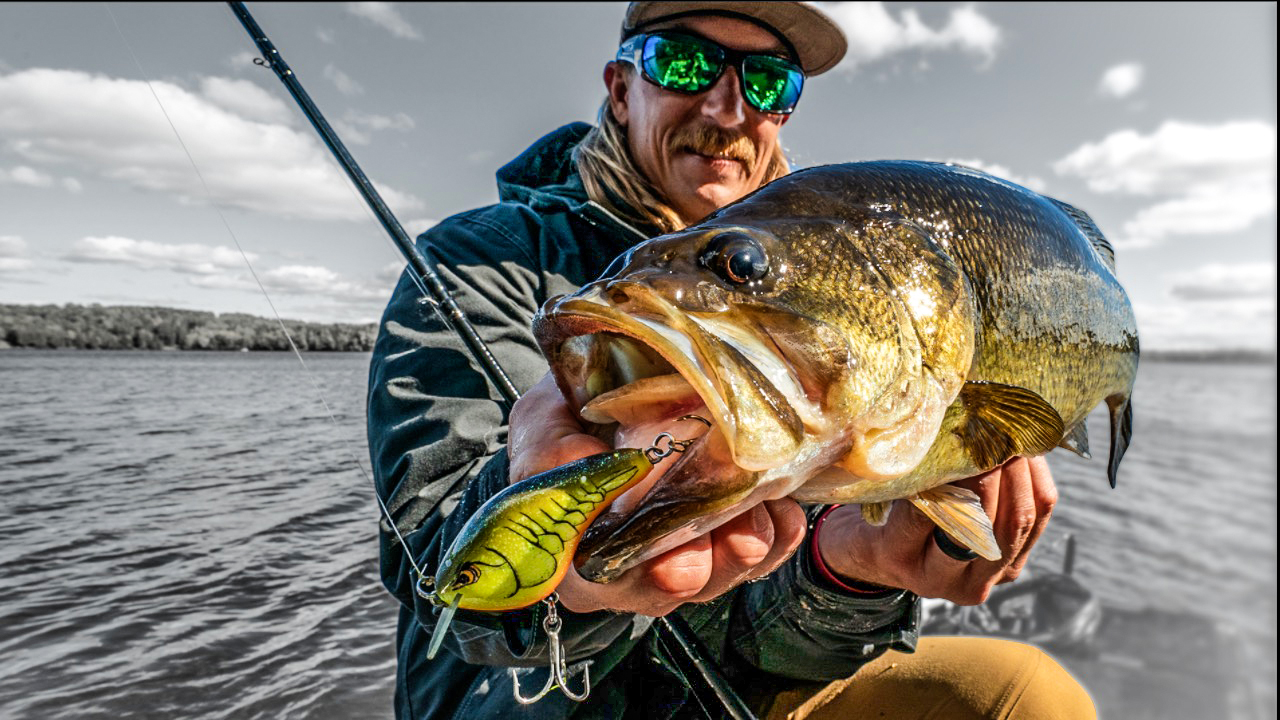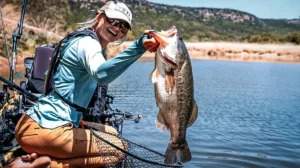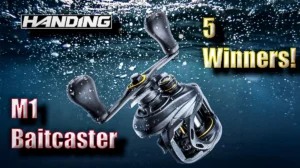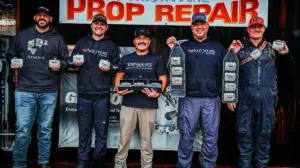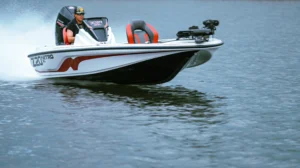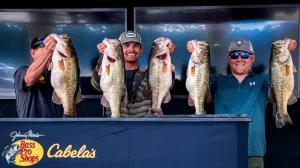The fall cool down brings a lot of a lake’s bass population to the bank, where covering water with an assortment of moving baits is the best strategy. Key among those is a crankbait, and more specifically, subtle flat-sided crankbaits that offer elements of finesse and power simultaneously. Seth Feider explains how he employs flat-sided crankbaits when hunting fall bass relating to hard shoreline cover like rock and wood. There’s no question he’ll have a big jig in hand when targeting dock bass, but there can be a lot of water to cover between docks — and a crankbait is the right tool for covering water and triggering bites.
TACKLE USED
- CRANKBAIT – Rapala Ott’s Garage Slim 06
- ROD – Daiwa Tatula 7’4″ Glass Casting Rod
- REEL – Daiwa Tatula SV TW Casting 7.1:1 Reel
- LINE – Sufix Advance Fluorocarbon, 12-pound
Feider’s 5 tips for catching fall bass on flat-sided crankbaits:
- Use beefy flat-sided crankbaits. Flat-sided cranks get pigeonholed as a prespawn bait, but they work excellently in the fall on cooling water too. The subtler action can be the ticket for slower-moving bass and pressured fish. For bass relating to cover, precise casts are essential. Many flat-sided crankbaits are challenging to cast accurately, so Feider prefers models with some weight. Weight, in part, comes through the use of heavier hooks, which also allow clearing bass from cover like laydowns.
- Target mixed cover shorelines. With grass dying off, the best areas feature a mix of hard cover (rock and wood). Make sure to bump your crankbait against hard bottoms and worm it through wood nice and easy, as fall bass can be more lethargic.
- Fish on a bladed jig rod. Feider does most of his crankbait fishing using a slow-action, heavy power composite bladed jig rod. Like ChatterBait fishing, the slow action reduces premature hooksets and keeps treble hooks pinned while the heavy power provides the necessary backbone for controlling bass around cover.
- Use a faster reel. Many bass anglers prefer a moderate speed reel in the 6.3:1 range, but Feider does all of his cranking using a 7.1:1. He keeps his trolling motor on high when beating the bank, so the faster reel is more about making up for the boat speed (forward momentum).
- Vary your retrieve. Deflection and speed change are the 2 ways to trigger bass with crankbaits. You can’t always control deflections, but you can with speed. Alter your retrieve speed, sometimes a little faster, sometimes a little slower, a little pump here, pause there. Hold on!


